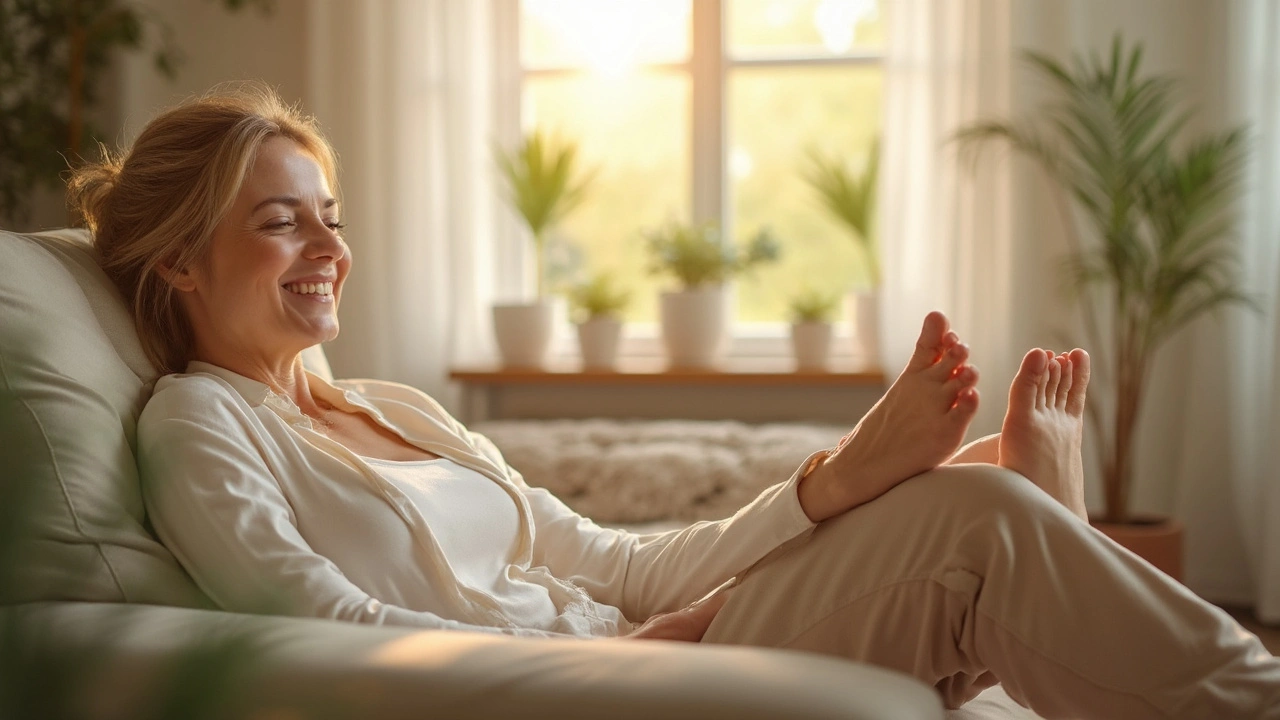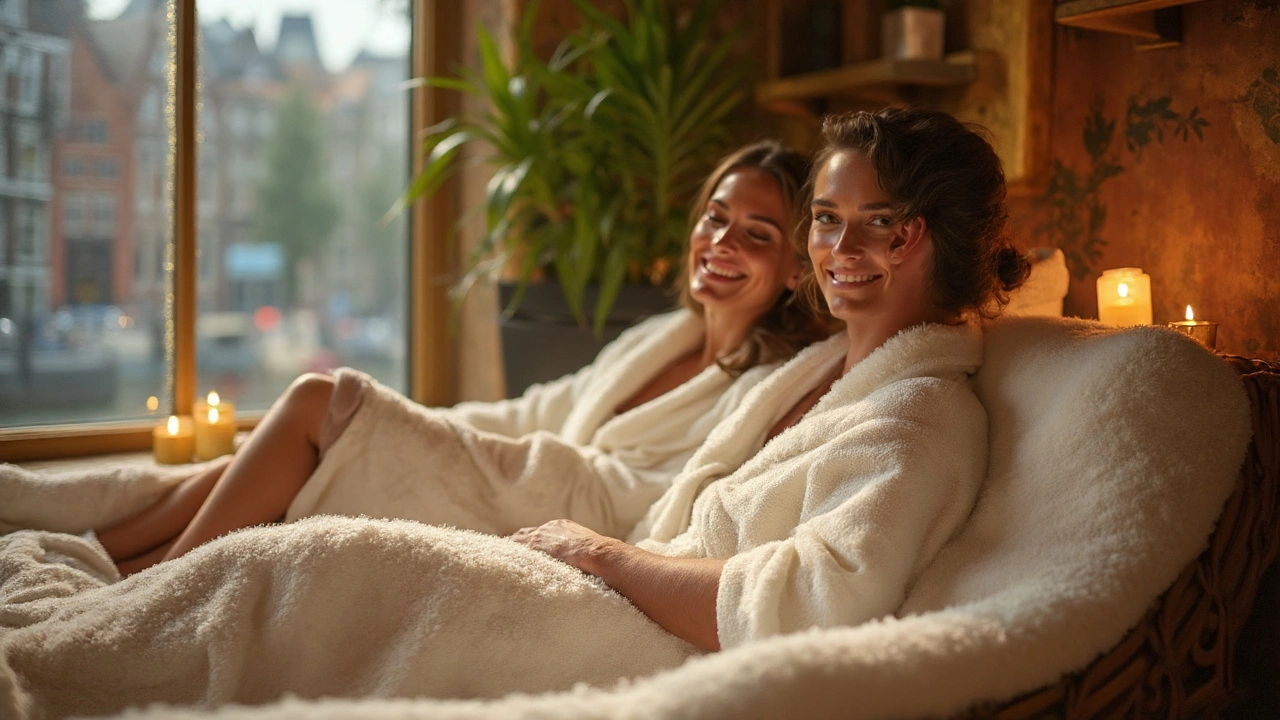Unlock the Therapeutic Benefits of Foot Massage Today

A lot of people see foot massage as a treat you get while on vacation or during a rare spa day. Here’s the thing, though: it actually does more for your wellbeing than you might think. That gentle kneading and pressure on your tired feet isn’t just relaxing—it kicks off a bunch of positive changes in your body, from calming your mind to helping you sleep better at night.
You don’t need a fancy spa or a luxury hotel to get these perks. Many community centers, local spas, and even some physical therapists offer foot massage sessions that fit your schedule (and your wallet). And if you’re doing this for the first time, there’s no need to stress. It’s safe, feels amazing, and you don’t have to be ticklish to enjoy it.
Ever noticed how you feel lighter after someone works the tension out of your feet? That’s not your imagination. Studies show that foot massage can actually lower stress hormones, improve blood flow, and lessen everyday aches. No magic, just biology. Plus, it’s something you can learn to try at home for the days you just need to unwind.
Ready to see what a good foot massage can do for you? Keep reading to get the facts, the how-to’s, and a few tips on finding the right place, whether you're in a big city or a small town.
- Key Points
- Benefits of Foot Massage
- Types of Foot Massage
- How to Find Foot Massage Services Near You
Key Points
Here’s what you need to know if you’re curious about why foot massage keeps popping up in health and wellness talk. This quick breakdown gives you the main reasons it’s worth your attention.
- Foot massage isn’t only about feeling good—it helps with stress, sleep, and pain relief for anyone, even if you’re on your feet all day or work from home.
- Boosts circulation, especially for people who sit for long hours or have health issues like diabetes that affect blood flow.
- Different styles are available: from gentle relaxation-focused massage to targeted sports and therapeutic options for specific issues like heel pain or plantar fasciitis.
- Regular sessions can improve flexibility, reduce swelling, and even benefit your mood—studies link it to lower levels of the stress hormone cortisol.
- Most sessions last 20-60 minutes and usually don’t require any special prep. Comfortable clothes and a willingness to relax are all you need.
- Prices vary, but you can find safe and skilled options in most neighborhoods, including day spas, medical offices, and even some gyms.
- If you’re worried about safety, stick with certified massage therapists or ask about the hygienic practices before you book. Always mention any medical conditions first.
These takeaways skip the hype and get you straight to the facts, so you know what to expect and how to get the most out of your next foot massage session.
Benefits of Foot Massage
It’s wild how something so simple can make such a huge difference. When you try a foot massage, it’s not just about feeling good for a few minutes. There’s solid science behind it. Studies from the Mayo Clinic and other health organizations show foot massage can help lower anxiety and pain, especially after surgery or a stressful day at work. It’s even known to help people with chronic health conditions, like diabetes, by making circulation better in their feet.
| Benefit | What the Data Says |
|---|---|
| Reduces Stress | Can lower cortisol levels up to 31% after a 20-minute session. |
| Improves Sleep | 70% of people reported better sleep after weekly foot massages. |
| Pain Relief | Found to cut pain scores by 30% for people with plantar fasciitis. |
| Boosts Circulation | Improves foot temperature and blood flow in those with poor circulation issues. |
Want real-world proof? Ever notice how athletes pop into the massage tent after a big game? That’s not just pampering—it speeds up muscle recovery by getting blood and oxygen moving. Even if you’re just chasing your kids around like me (Sylvia and Jasper are always on the go), your feet take a beating. Massage helps keep them from giving out on you too soon.
There’s a mental boost, too. According to Dr. Brent Bauer from the Mayo Clinic,
"Simple foot massage can produce profound effects on overall stress and wellbeing, sometimes more than full-body massage for people who are always on their feet."It’s affordable, takes little time, and fits right into your nighttime routine.
- Reduces tension—especially after standing or walking all day.
- Makes it easier to fall asleep, since it calms your nervous system.
- Eases pain from bunions, plantar fasciitis, or just plain sore feet.
- Supports heart health by improving circulation, especially if you have diabetes or sit a lot for work.
- Quick mood-lifter—just ten minutes can switch a rough day to a decent one.
If you’re looking for a natural way to unwind or an extra step for self-care, foot massage really is a game changer.

Types of Foot Massage
Not all foot massages are created equal. There are several styles out there, each with its own benefits and technique. Here's a breakdown to help you find the right fit for your feet.
- Swedish Foot Massage: This style uses long, flowing strokes and gentle pressure, perfect if you’re looking to relax or just chill out after a long day. It’s the most common type found in spas, and it’s known for improving blood flow and easing muscle tension.
- Reflexology: This one’s a bit different. Reflexology is based on the idea that certain spots on your feet line up with other parts of your body. By pressing these points, some practitioners believe you can help everything from headaches to digestion. There’s research showing reflexology can reduce anxiety and improve sleep for some people.
- Thai Foot Massage: Imagine steady stretching, pulling, and some more firm pressure. That’s Thai foot massage. It mixes ancient Thai medicine with massage techniques. It’s great for people who want more than a gentle rub—think stretching out stiff muscles and improving balance.
- Sports Foot Massage: Runners and athletes, listen up. This massage focuses on areas affected by specific sports injuries or repetitive strain. If you’ve been pounding the pavement or working out hard, sports foot massage targets sore spots, helps muscle recovery, and may even help to prevent future injuries.
- Deep Tissue Foot Massage: Some folks need more than a light touch. Deep tissue foot massage goes after those stubborn knots and deeper layers of muscle. It uses firmer pressure than Swedish massage and can be super effective for chronic foot pain or plantar fasciitis.
Each option has its perks. If you just want to unwind, Swedish works wonders. Got a lingering ache? Give deep tissue or sports massage a try. Curious about mind-body connections? Reflexology might surprise you. Don’t be afraid to ask your therapist which one fits your needs or even combine a few styles for a custom experience. That way, you’ll get the most out of your foot massage session, every single time.
How to Find Foot Massage Services Near You
If you’re ready to give your feet a break and unlock those foot massage benefits, finding a solid place nearby is actually easier than you might think. Most cities have options ranging from quick drop-in massage chains to locally owned wellness studios. Even smaller towns are catching up, with wellness centers offering basic foot care and specialized treatments.
Start by searching online. Google Maps is honestly your friend. Pop in “foot massage near me” and you’ll get a list of places with reviews, hours, and even prices in some cases. Don’t just look at star ratings—read through a couple of recent reviews to spot things like cleanliness, professionalism, and whether people felt relaxed after their session.
Check out this simple table to compare where folks usually find services:
| Location Type | What You’ll Find | Extras |
|---|---|---|
| Chain Spa | Standardized treatments | Membership deals |
| Local Wellness Studio | Personal touches | Combo treatments |
| Physical Therapy Clinic | Therapeutic focus | Covered by insurance (sometimes) |
| Reflexology Clinic | Targeted foot zones | Specialized therapists |
Don’t forget community boards, social media, or local Facebook groups. Moms groups are gold mines for honest recommendations. That’s how I found Jasper’s favorite spot—turns out it’s a hole-in-the-wall place across from our local grocery store.
Shopping malls or big plazas often have walk-in massage chairs or small shops—super convenient if you need a quick fix. For those who want peace of mind, check if your chosen place is licensed or if staff are certified in therapeutic massage. In the U.S., you can use the National Certification Board for Therapeutic Massage & Bodywork’s online tool to double-check therapist credentials.
“A skilled foot massage doesn’t just feel good—it supports health in measurable ways, so picking the right provider matters,” says Dr. Michelle Ebbin, touch therapy specialist and author.
If you’re new, here are quick tips for booking your first session:
- Call ahead and ask about experience with foot massage, not just full-body.
- Check for same-day appointments—some places fill up fast on weekends.
- Mention any specific issues (like sore spots, plantar fasciitis, pregnancy) so they can match you with the right therapist.
- Look for clear pricing and cancellation policies to avoid surprises.
Remember, the most relaxing spot is usually the one that makes you feel comfortable the second you walk in. Trust your gut, and if something feels off, you’re not stuck—there are always more options out there.


